Welcome to the ultimate deep dive into the life and career of a true padel phenom: Agustin Tapia. If you’re a fan of the sport, you’ve undoubtedly been mesmerized by his on-court magic. If you’re new to padel, you’re about to discover your new favorite player. In this comprehensive review, we’ll explore every facet of Tapia’s journey, from his humble beginnings in Argentina to his reign at the top of the world rankings. We’ll dissect his electrifying playing style, get up close and personal with his game-changing equipment, and relive the most iconic moments of his career. So, grab your padel racket (or your favorite beverage), and let’s get to know the man they call “The Mozart of Catamarca.”
The Making of a Champion: Agustin Tapia’s Early Life and Rise to Stardom
Every great story has a beginning, and Agustin Tapia’s is no exception. Born on July 24, 1999, in the small city of Catamarca, Argentina, Tapia’s journey to padel superstardom was fueled by a passion for the sport and an unwavering determination to be the best.
The Crucial Move to Rosario
To truly hone his skills, Tapia knew he had to make a life-changing decision. Consequently, at the tender age of 15, he left his family and friends behind to train in Rosario, the third-largest city in Argentina and a hotbed for padel talent.
This move was a testament to his single-minded focus on becoming a professional player. Subsequently, living across the street from his training facility, Tapia immersed himself in the world of padel. His dedication paid off, and by the age of 17, he had already climbed to the top of the Argentine padel circuit. Nevertheless, Tapia had his sights set on an even bigger stage: the World Padel Tour.
International Breakthrough
At 19, he made the bold move to Spain, the epicenter of professional padel. It was here that he would truly begin to make his mark on the international scene. Meanwhile, teaming up with his coach, Pablo Crosetti, Tapia embarked on his World Padel Tour journey, starting from the pre-qualifying rounds. His electrifying playing style and undeniable charisma quickly caught the attention of fans and fellow players alike.
The Belasteguín Partnership
A pivotal moment in his early career came when he partnered with his childhood idol, the legendary Fernando Belasteguín. This dream pairing proved to be a recipe for success, as they clinched their first title together at the 2019 Madrid Masters. Ultimately, this victory was a sign of things to come, as Tapia continued to climb the rankings, solidifying his place among the world’s elite.
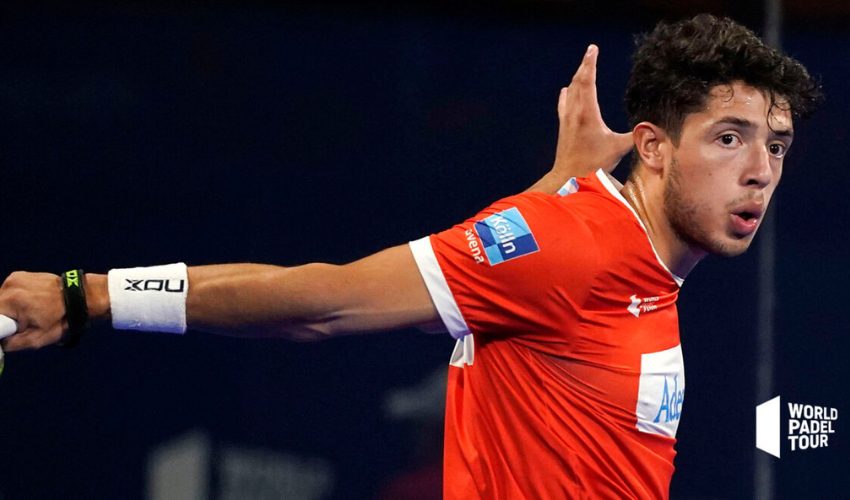
Deconstructing the Genius: A Deep Dive into Agustin Tapia’s Playing Style
If you’ve ever had the pleasure of watching Agustin Tapia play, you know that it’s an experience unlike any other. His on-court presence is a captivating blend of power, precision, and pure artistry. It’s no wonder they call him “The Mozart of Catamarca.”
So, what makes Tapia’s playing style so unique and effective? Let’s break it down:
Key Playing Characteristics
1. The Backhand Dominator: Tapia is a backhand player, which means he commands the left side of the court. His ability to generate incredible power and spin from his backhand wing is a key component of his game. Whether he’s hitting a blistering cross-court winner or a delicate drop shot, his backhand is a weapon to be feared.
2. The Master of the “Smash”: When it comes to overheads, Tapia is in a league of his own. His “smash” is a thing of beauty, a perfect combination of timing, technique, and raw power. He has an uncanny ability to read the ball and position himself for the perfect kill shot, leaving his opponents with no chance of a return.
3. The Creative Genius: Tapia’s game is not just about power; it’s also about creativity. He’s a master of improvisation, able to pull off seemingly impossible shots with a flick of his wrist. From behind-the-back winners to audacious drop shots, his creativity is a key factor in his success.
4. The Complete Player: While his attacking prowess is what often grabs the headlines, Tapia is a truly complete player. His defense is just as impressive as his offense. He’s quick on his feet, has incredible court coverage, and can turn a defensive position into an attacking opportunity in the blink of an eye.
A Legacy in the Making: Agustin Tapia’s Career Highlights and Achievements
Agustin Tapia’s career is a testament to his incredible talent and unwavering dedication. He has already achieved so much in his young career, and he’s just getting started.
Major Accomplishments
Here are just a few of his most impressive accomplishments:
- World #1 Ranking: Tapia, alongside his partner Arturo Coello, has reached the pinnacle of the sport, achieving the #1 ranking in the World Padel Tour.
- Multiple Tournament Titles: Furthermore, Tapia has won numerous titles on the World Padel Tour and Premier Padel circuit, including several Masters and Open events.
- Youngest Final Master Champion: In 2020, Tapia became the youngest player to win the Final Master of the World Padel Tour, a prestigious event that features the top 8 pairs in the world.
The Dominant Partnership with Coello
A Dominant Partnership: Tapia’s partnership with Arturo Coello has been a force to be reckoned with. The dynamic duo has dominated the professional circuit, winning a remarkable 14 titles in 2024 alone and boasting an incredible 47-match winning streak. Consequently, their success has redefined modern padel dominance.
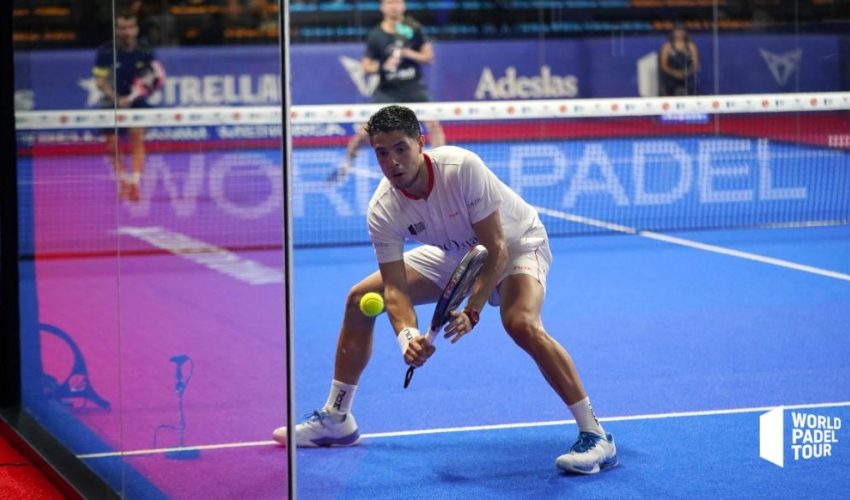
Beyond the Court: Getting to Know the Man Behind the Racket
While his on-court achievements are what have made him a global superstar, there’s more to Agustin Tapia than just padel. He’s a humble and down-to-earth individual who is beloved by fans and fellow players alike.
Personal Insights
Here are a few fun facts about the “Mozart of Catamarca”:
- His Idol: Tapia’s childhood idol is none other than the legendary Lionel Messi. It’s fitting that two of Argentina’s greatest athletes would share a mutual admiration.
- His Nickname: In addition to “The Mozart of Catamarca,” Tapia is also known as “El Pollo,” which means “The Chicken” in Spanish. This nickname represents hope and the chosen one in Argentina.
- His Love for His Hometown: Despite his global fame, Tapia has never forgotten his roots. He has a deep love for his hometown of Catamarca and is a proud ambassador for his community.
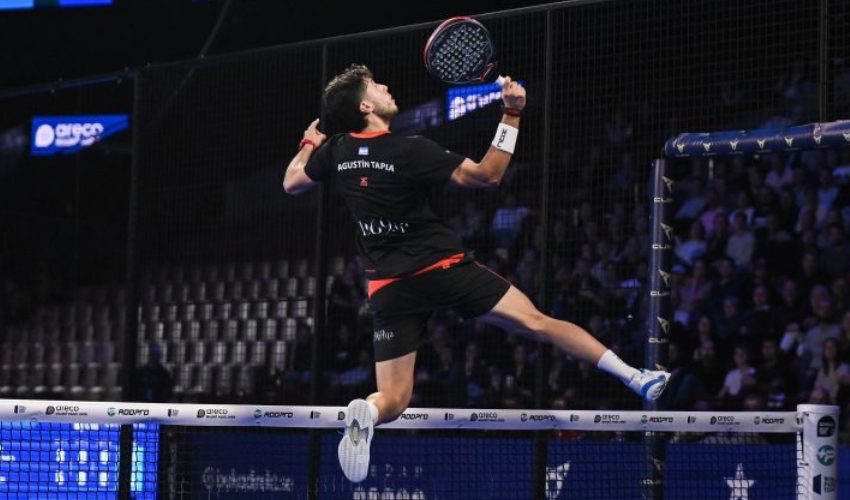
A Masterclass in Motion: The Biomechanics of Agustin Tapia’s Signature Shots
You’ve seen the highlights. The impossible angles, the thunderous smashes, the delicate touch. But have you ever stopped to wonder how he does it? What are the intricate mechanics behind the magic? Let’s put on our analyst hats and break down the signature shots that have become synonymous with the name Agustin Tapia. This isn’t just about watching; it’s about understanding, so you can even try to incorporate some of these principles into your own game.
1. The “Por Tres” Smash: A Symphony of Power and Finesse
The “por tres” (meaning “for three” in Spanish) is one of the most exciting shots in padel, and Agustin Tapia is its undisputed king. This is the overhead smash that sends the ball out of the court over the 3-meter high side wall. For Tapia, it’s not just a shot; it’s a statement.
The Technical Breakdown
- The Setup: Your first clue that a “por tres” is coming is Tapia’s positioning. You’ll notice him take a few quick, analytical steps backward as the lob goes up from his opponents. He isn’t just drifting back; he’s calculating. He needs to get behind and slightly to the side of the ball’s trajectory. His body will turn almost completely sideways to the net, coiling up like a spring.
- The Kinetic Chain: This is where the magic happens. The power doesn’t come from his arm alone; it’s a full-body explosion. It starts from the ground up. You’ll see him bend his knees, loading his legs. As he jumps, that energy transfers up through his core, into his torso, which begins to rotate violently towards the ball. His non-hitting arm will point up at the ball for balance and aiming before tucking in sharply to increase rotational speed.
- The Contact Point: This is crucial. Unlike a flat smash aimed at the floor, the “por tres” requires a different contact point. Tapia hits the ball at its absolute highest point, often slightly behind his head. He uses an open racket face and imparts a massive amount of topspin and sidespin (a “kick smash”). This spin is the secret ingredient. It causes the ball to kick up sharply after hitting the back glass, giving it the necessary height to clear the side wall.
- The Follow-Through: His motion doesn’t stop at impact. His arm and racket will follow through across his body, and he’ll land on balance, ready for the unlikely event that the ball comes back.
Watching Agustin Tapia execute a “por tres” is like watching a master at work. It’s a perfect blend of athletic grace, raw power, and an almost scientific understanding of physics and angles.
2. The “Víbora”: The Venomous Snake Strike
The “víbora” (or “viper”) is another signature shot, a more aggressive type of bandeja (or side-tray smash). While a bandeja is a defensive shot meant to maintain position at the net, Tapia turns the víbora into a potent offensive weapon.
- The Intent: When you see Tapia hit a víbora, know that he intends to do damage. His goal is to hit the ball with heavy slice and pace, aiming for the corner where the side glass meets the back glass. The immense spin causes the ball to skid low and unpredictably off the walls, making it a nightmare for his opponents to return.
- The Technique: Like the “por tres,” it starts with a sideways turn. However, the contact point is different. Instead of hitting the ball high above his head, he makes contact to the side of his body, around head height. The racket face is open, and he “cuts” through the ball, generating that wicked slice. Imagine a karate chop motion, but with a padel racket.
- The Deception: What makes Tapia’s víbora so deadly is his ability to disguise it. The initial preparation looks very similar to his other overheads. Opponents don’t know if he’s going to hit a powerful flat smash, a high-kicking “por tres,” or a venomous víbora until the last split second. This deception is a key part of his tactical genius.
3. The “Chiquita”: The Subtle Art of War
While the explosive shots get the crowd on their feet, it’s often the subtle shots that win the toughest points. Enter the “chiquita” (meaning “little one”). This is a soft, low shot that Tapia uses to regain control of the net.
- The Scenario: Imagine this: you’ve been pushed back from the net by a deep lob. Your opponents are in command. Hitting a hard shot from the back of the court is risky and often leads to an error. This is where Agustin Tapia deploys the chiquita.
- The Execution: From the back of the court, he will play a soft, low volley that is aimed to land at the feet of the opponents who are controlling the net. The ball has very little pace and bounce. The goal is to force the net players to hit an uncomfortable, upward volley. This weak return gives Tapia and his partner the crucial time they need to storm the net and turn the tables, transitioning from defense to offense in a single, brilliant shot. It’s a shot that requires immense touch and tactical awareness, and Tapia is a master of it.
A History of Partnerships: The Duos that Defined Tapia’s Career
In padel, your partner is everything. A successful duo is a complex dance of chemistry, complementary skills, and shared ambition. Agustin Tapia’s journey to the top has been marked by a series of pivotal partnerships, each teaching him something new and shaping the player he is today.
The Dream Team: Fernando Belasteguín (2019-2020)
For a young Agustin Tapia, partnering with Fernando “Bela” Belasteguín was the equivalent of a rising basketball star getting to play alongside Michael Jordan. Bela is a living legend, a player who held the world #1 spot for 16 consecutive years.
Partnership Dynamics
- The Dynamic: This was a classic master-and-apprentice pairing. On one side, you had the experience, tactical genius, and relentless consistency of Bela. On the other, you had the explosive power, youthful flair, and raw talent of Tapia. Bela acted as the on-court general, guiding Tapia, controlling the tempo, and setting him up to unleash his devastating attacks.
- Key Victories: Their partnership, though relatively short, was incredibly successful. They famously won the Madrid Masters in 2019, a huge breakthrough for Tapia. They capped off their time together by winning the 2020 Menorca Final Master, a victory that officially announced Tapia’s arrival as a member of padel’s absolute elite.
- The Lesson: Playing alongside Bela taught Tapia what it takes to win at the highest level. He learned about professionalism, mental toughness, and the importance of tactical discipline. It was the finishing school that turned a prodigious talent into a true champion.
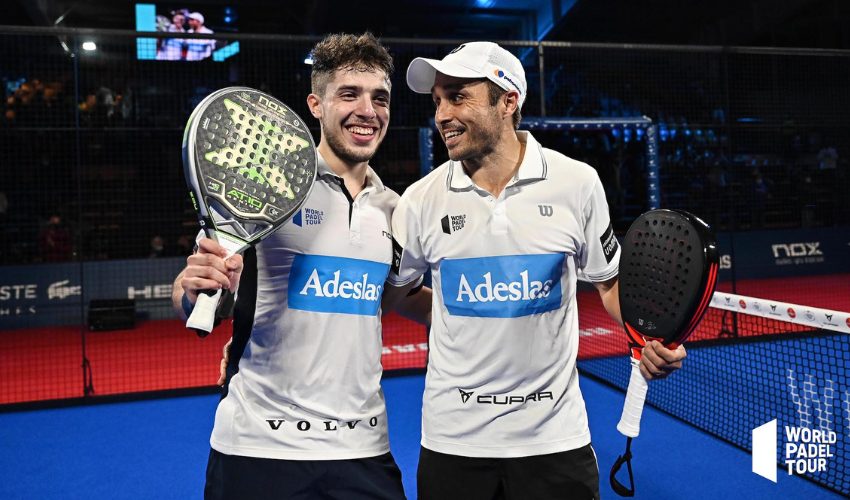
The Magicians’ Alliance: Sanyo Gutiérrez (2021-2022)
After the partnership with Bela ended, Tapia teamed up with another Argentinian legend, Daniel “Sanyo” Gutiérrez. Known as “The Magician” for his incredible touch and unpredictable shot-making, Sanyo brought a different dimension to the partnership.
Creative Collaboration
- The Dynamic: This was a partnership of two artists. Both Tapia and Sanyo are right-handed players known for their creative genius. To make it work, Tapia made a significant career move: he switched to the “drive” (right) side of the court, while Sanyo played on the “revés” (backhand) side. This showed Tapia’s versatility and willingness to adapt. Their game was a spectacle of feints, drop shots, and mind-bending angles that often left opponents and spectators alike in awe.
- Success and Challenges: They enjoyed considerable success, winning multiple tournaments and consistently challenging for the top spot. However, the partnership of two such creative players also had its challenges, sometimes leading to moments of inconsistency.
- The Lesson: This period proved Tapia’s adaptability. He demonstrated that he wasn’t just a one-dimensional backhand powerhouse but a complete player who could excel on either side of the court. It further developed his tactical understanding and his own creative repertoire.
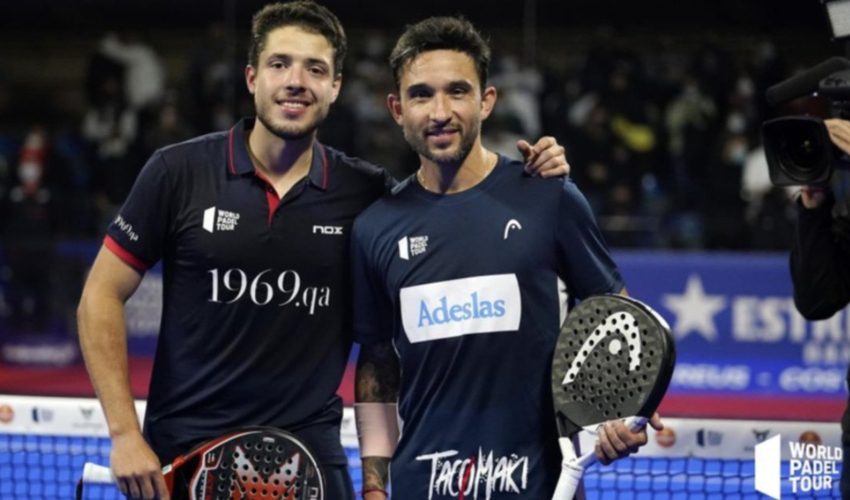
The Golden Duo: Arturo Coello (2023-Present)
In 2023, Agustin Tapia joined forces with the Spanish prodigy Arturo Coello, and the world of padel was changed forever. This partnership wasn’t just good; it was historic.
Perfect Chemistry
- The Dynamic: This is a pairing of two young, hungry, and supremely athletic players in their absolute prime. Coello, with his towering height (1.90m or 6’3″) and left-handed power, is the ultimate backhand player. This allowed Tapia to move back to his natural drive side, where his creativity and all-court coverage could truly shine. They are the perfect storm: Coello’s overwhelming power and reach combined with Tapia’s speed, defense, and magical shot-making.
- Record-Breaking Dominance: Their first season together was simply breathtaking. They went on an unprecedented winning streak, racking up title after title. They played with an aura of invincibility, a combination of joyful energy and ruthless efficiency. Their dominance was so absolute that they secured the #1 world ranking with months to spare in the season.
- The Future: This partnership represents the new generation of padel. They are fast, powerful, and athletic, and they have redefined what is possible on a padel court. As long as they play together, they will be the team to beat, and you can expect them to continue breaking records and dazzling audiences around the globe.
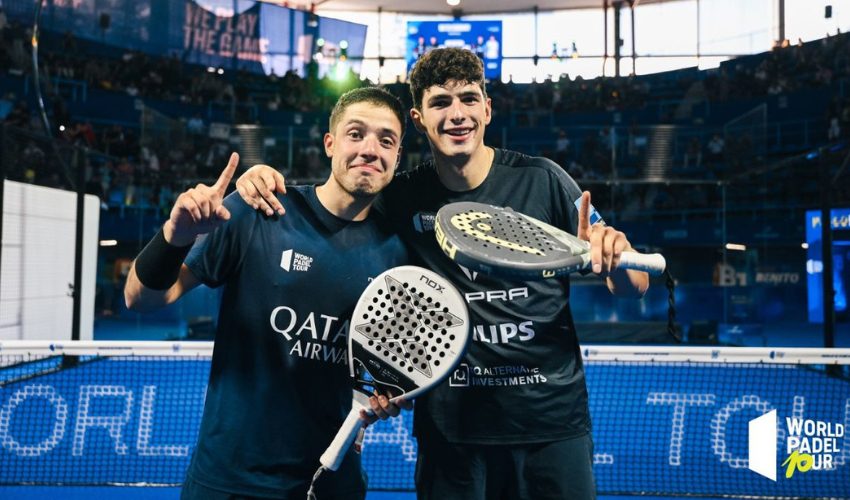
The Tools of a Champion: A Review of Agustin Tapia’s Padel Equipment
To play like the best, you need the best equipment. And when it comes to padel gear, Agustin Tapia relies on the cutting-edge technology of NOX. As his official sponsor, NOX has developed a signature line of rackets and apparel that are designed to complement his explosive playing style.
Let’s take a closer look at the gear that helps Tapia dominate the court.
The NOX AT10 Genius Racket Series:
The centerpiece of Tapia’s equipment arsenal is his signature line of rackets, the NOX AT10 Genius series. Developed in collaboration with the man himself, these rackets are engineered for maximum performance.
Flagship Models
- NOX AT10 Luxury GENIUS 18K Alum 2025: This is Tapia’s go-to racket, and for good reason. It’s a teardrop-shaped racket that offers the perfect balance of power and control. The 18K aluminized carbon face provides a solid, comfortable feel, while the MLD Black Eva core delivers a powerful and precise response. The EOS Flap technology improves aerodynamics, and the extended grip allows for greater control and maneuverability.
- NOX AT10 Luxury GENIUS Attack 12K 2025: For players who want to take their attacking game to the next level, the Genius Attack is the perfect choice. With a diamond-shaped head and a high balance, this racket is built for power. The 12K carbon face provides a stiff, responsive feel, while the Exclusive Spin surface allows for incredible spin and control.
Why Choose the NOX AT10 Genius Series?
- Developed with a Champion: These rackets have been designed and tested by Agustin Tapia himself, so you know you’re getting a product that’s built for performance.
- Cutting-Edge Technology: NOX is at the forefront of padel innovation, and the AT10 Genius series is packed with the latest technology to help you play your best.
- A Racket for Every Player: Whether you’re an advanced player looking for a professional-grade racket or an intermediate player looking to improve your game, there’s a NOX AT10 Genius racket that’s perfect for you.
Unlocking Your Potential: A Deeper Look at the NOX AT10 Gear
We’ve talked about Tapia’s rackets, but let’s go deeper. If you’re serious about your game, you need to understand the technology you’re investing in. The NOX AT10 series isn’t just a brand; it’s a system designed for peak performance. When you choose a NOX AT10 product, you’re choosing the same tools trusted by Agustin Tapia in the heat of championship battles.
The Racket Core: MLD Black EVA vs. HR3 Core
The “engine” of your racket is its core. NOX uses different cores for different playing styles.
- MLD Black EVA (found in the 2025 AT10 Genius 18K Alum): This is a Multilayered Black EVA core. Think of it as a sandwich of different rubber densities. The outer layers are firmer, providing power for fast, attacking shots like smashes. The inner layer is softer, providing comfort and more output on slower shots, like defensive lobs or chiquitas. This technology gives you a fantastic feel across all types of shots, which is why it’s perfect for a versatile, all-court player like Tapia.
- HR3 Core (found in previous models): This is a high-density HR3 rubber. It’s known for providing the maximum possible power. It has a harder feel and is great for players who love to attack and want an immediate and forceful response from the racket on every shot.
The Racket Face: The Science of Carbon
The face of the racket is your point of contact with the ball. The material used here dictates the feel and stiffness.
- Carbon 18K Alum: You’ll see this on Tapia’s current racket. The “18K” refers to 18,000 carbon threads per band. This high number creates a very tight, strong weave. NOX has aluminized this carbon, which gives it a slightly softer, more flexible feel than standard carbon, while increasing its durability. The result? You get the power and precision of high-end carbon, but with a more comfortable feel that reduces vibrations and improves your touch on the ball. It’s the best of both worlds.
- Carbon 12K: This has 12,000 threads. It’s lighter than 18K and provides a slightly stiffer feel. This stiffness translates to more power, which is why you’ll find it on the “Attack” version of the AT10. It’s for the player who prioritizes raw power above all else.
The Innovations You Can Feel
NOX and Agustin Tapia didn’t stop there. The rackets are packed with features you can actually feel:
- EOS Flap Technology: Look at the side of the racket’s heart (the throat). You’ll see two perforations. This isn’t just for looks. This system improves the aerodynamics, making the racket faster and easier to swing. It also helps to distribute the weight, making the racket feel more maneuverable, allowing you to react faster at the net.
- Pulse System and NOX Custom Grip: These features are all about comfort and reducing injury. The Pulse System inserts elastomer bands on the side of the grip to absorb vibrations. The NOX Custom Grip (sold separately but a worthy upgrade) allows you to adjust the grip to perfectly fit your hand, further reducing vibration and improving your hold on the racket.
- Smartstrap®: Have you ever seen a player’s wrist strap break? The patented Smartstrap® system allows you to easily replace the wrist strap for better hygiene or to customize the look of your racket without losing your warranty. It’s a simple but brilliant innovation.
The Future is Bright for Agustin Tapia
At just 25 years old, Agustin Tapia has already achieved more than most players could ever dream of. But if there’s one thing we know about this Argentine prodigy, it’s that he’s always hungry for more. With his incredible talent, unwavering determination, and a burning desire to be the best, there’s no limit to what he can accomplish.
So, whether you’re a die-hard padel fan or a newcomer to the sport, make sure to keep your eyes on Agustin Tapia. You’re witnessing the rise of a true legend, and you won’t want to miss a single moment of the action.
Do you want to improve your Padel Gameplan? For additional insight of the sport and any Padel advice, keep your eyes peeled at PadelGamePlan.com!
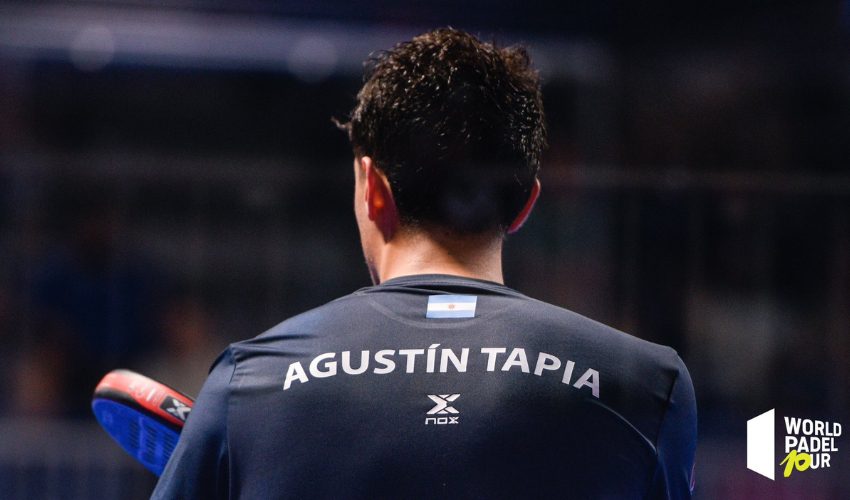
FAQ – PADEL RACKETS
What is the best way to choose a padel tennis racket for me?
Consider your skill level, playing style, and budget. New players look for control – advanced may prefer power-oriented padel tennis rackets. For more information, please read this Article.
What’s the best padel racket for beginners?
A lightweight and round padel tennis racket made of a fiberglass frame would be right for beginners.
How often should I change my padel racket?
It depends on usage. Casual players will probably replace every 1-2 years, and competitors will change it every year.
Do you want a heavier or light padel tennis racket?
A light padel racket gives you more precision – A heavy racket gives more power.
What is the difference between carbon and fiberglass padel tennis rackets?
Carbon padel tennis rackets assist with runtime and power – Fiberglass padel rackets provide versatility and comfort.


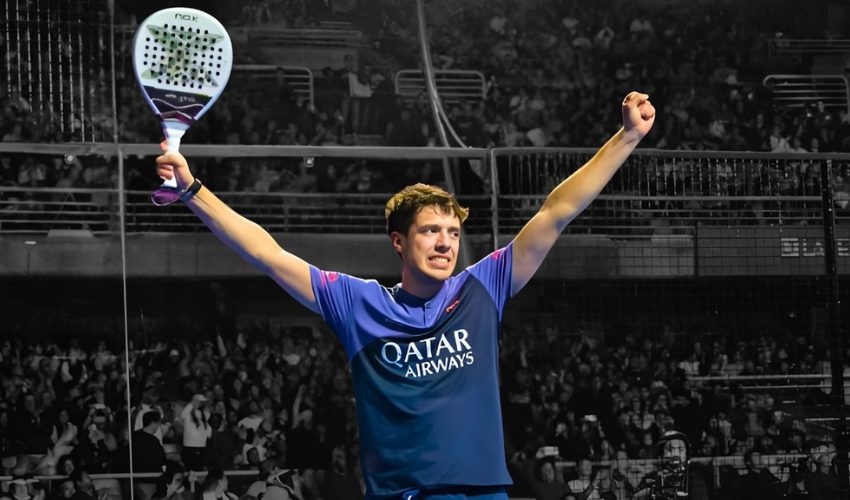

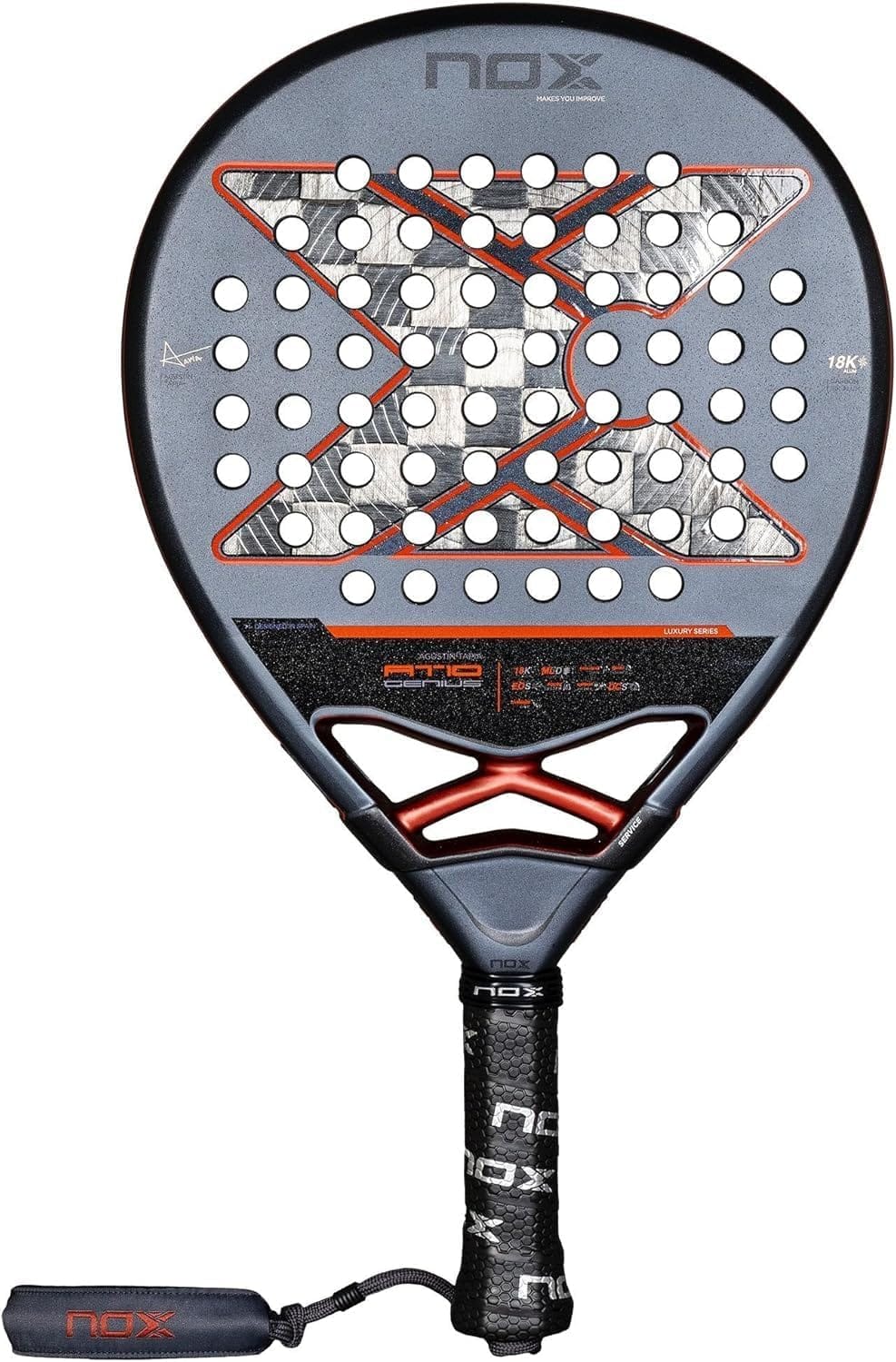
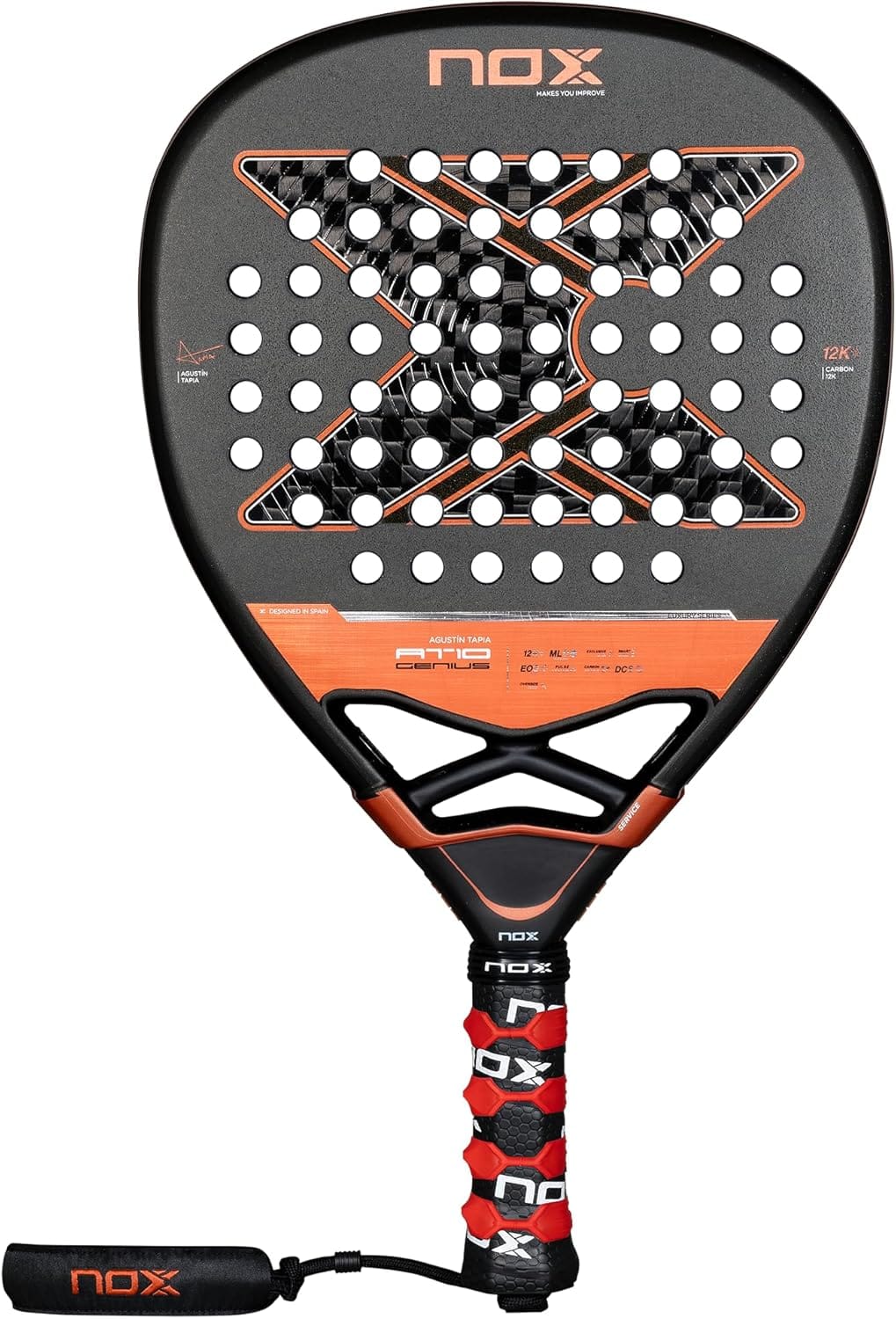
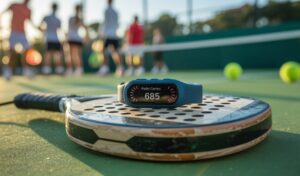
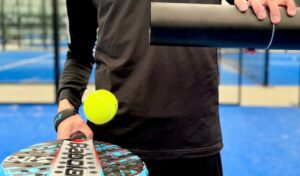

One Response